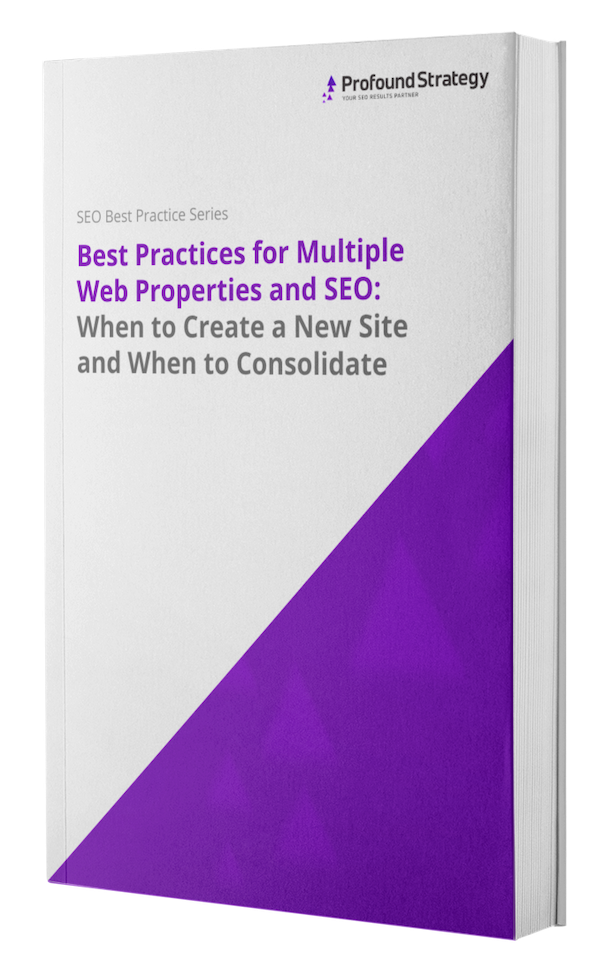Best Practices for Multiple Web Properties and SEO: When to Create a New Site and When to Consolidate

Will multiple websites help or hinder your SEO strategy? Will a microsite or separate event website attract new audiences, or will a consolidated digital presence strengthen the brand?
There’s no easy answer.
Building a new web property and consolidating multiple, existing properties into one, are both very big projects, so it’s crucial to understand SEO implications and best practices before starting either. What’s best for your company will depend on the specific circumstances and resources that affect the project.
Available now: The latest addition to our SEO Best Practice Series, Best Practices for Multiple Web Properties and SEO, for a complete list of pros and cons, best practices for building and for consolidating, and a quick-and-easy flowchart to help you sum it all up into a final decision.
Pros and Cons of Multiple Websites
Building a second website is not a quick-fix for any digital marketing strategy, least of all SEO, but there are some situations when it might make sense.
Pros of building a second website include:
- Rank multiple URLs on page one of organic search results for target keywords.*
- Create high-quality links back to the main website.*
- Reach a new audience with a separate brand or distinct, targeted campaign.
*Note: The SEO benefits that inspire many marketers to consider building multiple websites are long-term, no-guarantee goals. The new site has to earn its own organic authority with search engines before either of these benefits can be expected.
Cons of building a second website, then, include:
- Additional resources are needed to design, build, optimize, maintain, etc.
- Links to the main site have little-to-no initial SEO value.
- Multiple URLs compete for your great content.
- Multiple sites compete for users’ attention, clicks, preferences, etc.
- Using Analytics to track users across multiple domains becomes more difficult.
- Reduces cross-sell opportunities.
In the end, setting up a “quick” site uses few resources, but ultimately provides no real SEO value. But building a website that could potentially rank well in organic search and/or provide positive backlink value, takes as much time and expense as building the company’s first site did. If the purpose of the second website is to bolster the company’s main site, those resources could usually be better spent.
SEO Best Practice Series: Best Practices for Multiple Web Properties and SEO
For a more in-depth discussion on the SEO, UX, and brand strategy implications of a single vs multiple websites, fill out the form to the right to download Multiple Websites and SEO. The PDF includes:
- The difficulties of multiple web properties.
- The benefits of a consolidated web presence.
- When creating multiple websites makes sense.
- SEO best practices for multiple websites.
- SEO best practices for consolidating multiple websites.
- Domains vs subdomains.
There are links throughout the PDF to additional resources and the tools you’ll need to build or consolidate well. The PDF also ends with our “Multiple Properties or Consolidation?” flowchart, so if you get through the whole thing and still can’t decide—a few Yes/No answers will get you there.
Special thanks to friends and colleagues who contributed their priceless perspectives and insights:
Stephanie Miller (@StephanieSAM)
Dave Rohrer (@DaveR)
Robert Rose (@Robert_Rose)
Steve Wiideman (@SEOSteve)